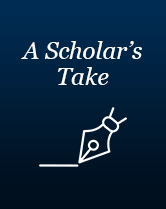
War or Peace in Afghanistan?
As U.S. military operations in Afghanistan enter its 10th year, hopes for peace in 2011 do not look promising.
President Barack Obama’s review of the war paints a rather positive outlook in a December 2010 assessment, which concludes that the United States has made enough security gains to begin withdrawing troops in July. Similarly, the U.S. military and the International Security Assistance Force (ISAF) are touting successes in the area around the all important southern city of Kandahar and are declaring scores of districts safe enough to shift the responsibility to Afghan forces. Afghan President Hamid Karzai established a High Peace Council in 2010 to manage negotiations with insurgents and greater efforts are planned for training the Afghan army and police. The belief among many in Washington is that military means can force the Taliban back to the negotiation table and provide enough leverage for the U.S. and its allies to broker a deal. With such optimism, it’s not surprising that many in Washington accept the narrative that our counter-insurgency campaign is successfully proceeding according to plan.
The reality seems to suggest a far more, grim picture. Violence across Afghanistan has increased (not decreased, as the administration asserts) with a rise in casualties among ISAF and Afghan forces as well as civilians. The Afghan National Security Forces (ANSF) has proven to be a poor match for the Taliban. While the central government in Kabul and the Afghan military and police remain fragmented and highly politicized, the insurgency seems to be gaining strength. The Taliban have made significant inroads into northern Afghanistan, in effect nationalizing the insurgency; the tactical gains that the U.S. has made in the south are a result of overwhelming U.S. military power and is likely not sustainable across the country. Despite heavy losses, the Taliban and other insurgent groups are finding recruits in Afghanistan’s eastern provinces including Pakistan’s borderland, stretching from Khyber Pakhtunkhwa and the Federally Administered Tribal Areas (FATA) to Balochistan. The insurgents are using the region on both sides of the border to regroup, reorganize and rearm. This strategic advantage has allowed the insurgency to proliferate in nearly every corner of the country. Contrary to the U.S. military’s recent review and positive assessment of the shifting momentum, dozens of districts around the country are now firmly under Taliban control.
Furthermore, too little effort has been made to develop political institutions, local government and a functioning judiciary. A poorly crafted constitution has enabled President Karzai to usurp power and block progress in many key areas of governance, resulting in weak political parties and continued atomization of Afghan politics. While historically, power in Afghanistan has resided with local provinces and not in the capital, Karzai’s current iron grip has made governance and accountability at the local level extremely problematic. The U.S. has time and again reinforced this by choosing not to press for the district-level elections and support for empowering provincial councils that would devolve power from the center to the periphery. A past failure to adequately support institutions that might balance the presidency – the national assembly and the judiciary – has only led to greater corruption and obstruction at the center.
At the heart of the problem with our current policy is the Obama administration’s lack of a coherent and cohesive national security strategy as well as the continued unwillingness to address the serious shortcomings in the Afghan political system. Unless the U.S. and its allies are willing to address this reality and the core issues outlined above, the outlook for peace in Afghanistan in 2011 looks bleak.
Farid Senzai is a fellow and the director of research at the Institute for Social Policy and Understanding (ISPU). This article was published in Islamic Monthly.
ISPU scholars are provided a space on our site to display a selection of op-eds. These were not necessarily commissioned by ISPU, nor is their presence on the site equal to an endorsement of the content. The opinions expressed are that of the author and do not necessarily reflect the views of ISPU.


